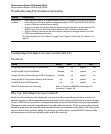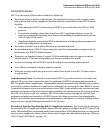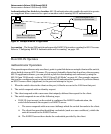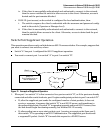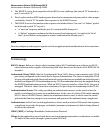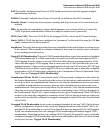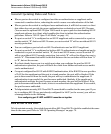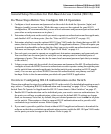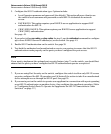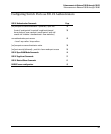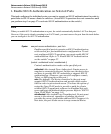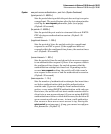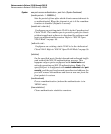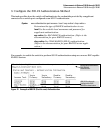
37
Enhancements in Release F.05.05 through F.05.70
Enhancements in Release F.05.05 through F.05.60
3. Configure the 802.1X authentication type. Options include:
• Local Operator username and password (the default). This option allows a client to use
the switch’s local username and password as valid 802.1X credentials for network
access.
• EAP RADIUS: This option requires your RADIUS server application to support EAP
authentication for 802.1X.
• CHAP (MD5) RADIUS: This option requires your RADIUS server application to support
CHAP (MD5) authentication.
See page -42.
4. If you select either eap-radius or chap-radius for step 3, use the radius host command to configure
up to three RADIUS server IP address(es) on the switch. See page -43.
5. Enable 802.1X authentication on the switch. See page 39.
6. Test both the authorized and unauthorized access to your system to ensure that the 802.1X
authentication works properly on the ports you have configured for port-access.
Note
If you want to implement the optional port security feature (step 7) on the switch, you should first
ensure that the ports you have configured as 802.1X authenticators operate as expected.
7. If you are using Port Security on the switch, configure the switch to allow only 802.1X access
on ports configured for 802.1X operation, and (if desired) the action to take if an unauthorized
device attempts access through an 802.1X port. See page 55.
8. If you want a port on the switch to operate as a supplicant in a connection with a port operating
as an 802.1X authenticator on another device, then configure the supplicant operation. (Refer
to “Configuring Switch Ports To Operate As Supplicants for 802.1X Connections to Other
Switches” on page -57.)



